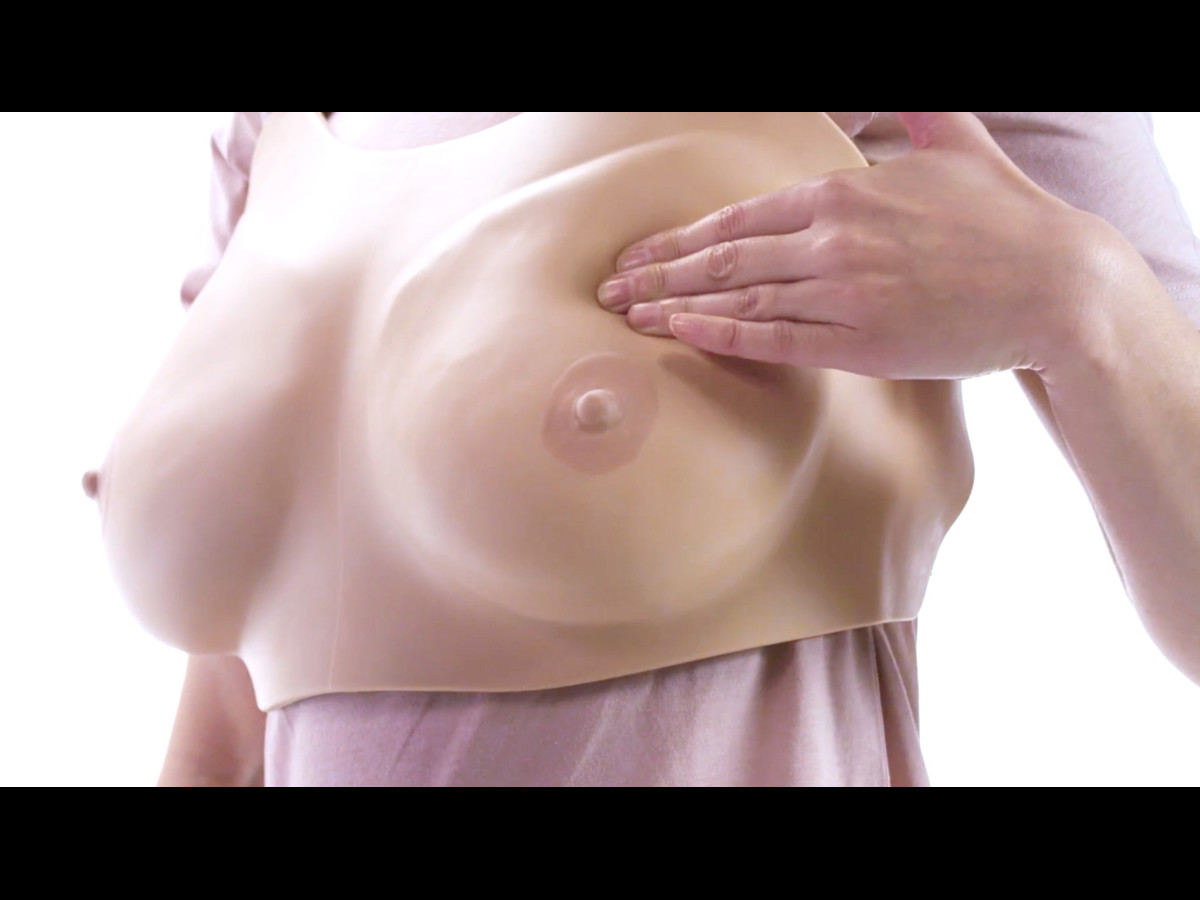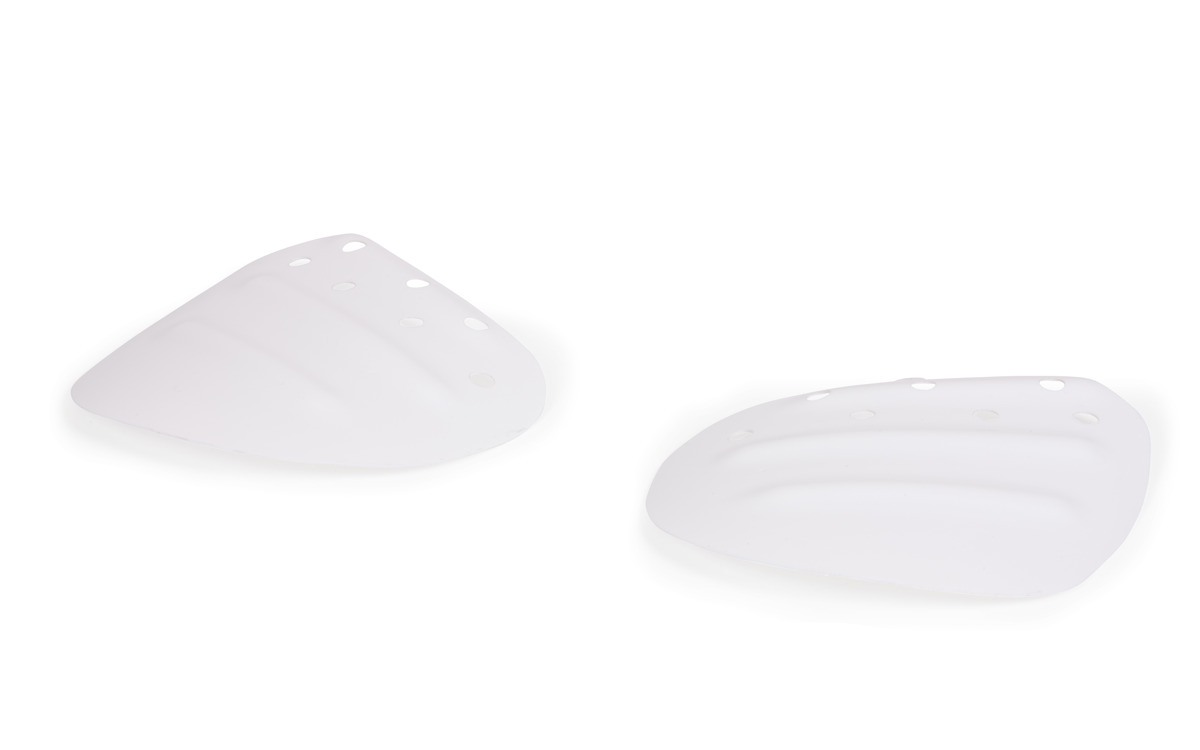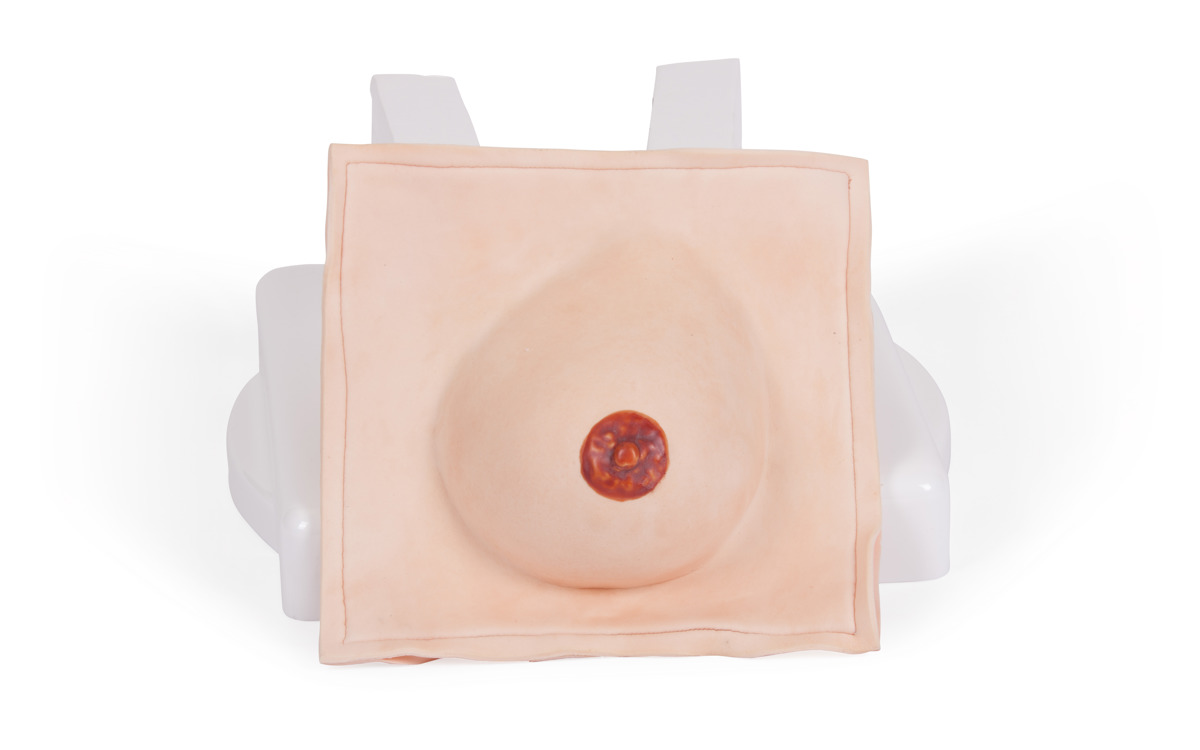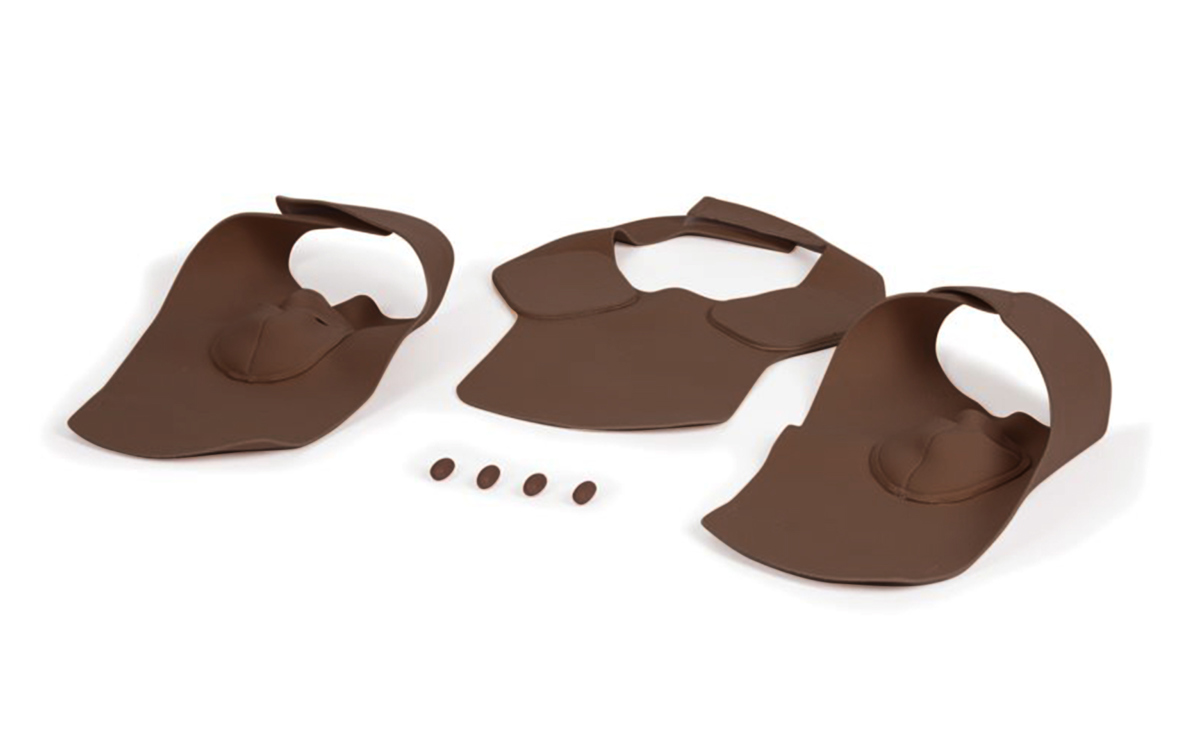














Advanced Breast Examination Trainer (Light Skin Tone)
Skin Tone
Model
Adding to cart...
Added to cart
Sorry, something went wrong adding the product to the cart.
The Advanced Breast Examination Trainer offers a hybrid training solution, covering bench top and simulated patient learning.
This model gives the widest variety of examinable anatomy and pathologies in the Breast Trainer range. The inclusion of a clavicle, and two axilla pads, allows for the placement of lymph nodes in six locations, covering axillary, supra and infraclavicular positions.
The WCRF International (World Cancer Research Fund) found that breast cancer is the most common cancer worldwide, accounting for 12.5% of the total number of cases diagnosed in 2020.*
Many health care professionals are required to conduct diagnostic breast examinations to identify pathologies in the breast tissue, as part of their routine job. When designing the latest version of our Breast Examination Trainer we made strides in improving the realism and pathologies of the model, in close collaboration with:
The Advanced Breast Examination Trainer offers a hybrid training solution, covering bench top and simulated patient learning.
This model gives the widest variety of examinable anatomy and pathologies in the Breast Trainer range. The inclusion of a clavicle, and two axilla pads, allows for the placement of lymph nodes in six locations, covering axillary, supra and infraclavicular positions.
The WCRF International (World Cancer Research Fund) found that breast cancer is the most common cancer worldwide, accounting for 12.5% of the total number of cases diagnosed in 2020.*
Many health care professionals are required to conduct diagnostic breast examinations to identify pathologies in the breast tissue, as part of their routine job. When designing the latest version of our Breast Examination Trainer we made strides in improving the realism and pathologies of the model, in close collaboration with:
- Peter Donnelly of Torbay Hospital, UK
- Staff of the Clinical Skills Resource Centre, University of Liverpool, UK
- Staff of The Clinical Practice Centre, St James’ University Hospital, Leeds, UK
*Worldwide cancer data | World Cancer Research Fund International (wcrf.org)
Overview
- Pathologies are easily changeable and can be placed in various predetermined locations
- Offers dual purpose training, bench top (with the use of the hard torso) and hybrid
Realism
- Soft tissue breasts offer a realistic look and feel
- Clavicular and axilla pads give a more accurate lymph node placement
Versatility
- Range of pathologies can be moved within the breast model for a variety of diagnostic scenarios
- Ergonomic design for Simulated Patient exercises, including prolonged use in OSCEs and assessments
- Adjustable straps to fit a wide range of simulated patients
Cleaning
- Product skin surface is washable using a mild soap and water
- Allow to fully dry before storing
Safety
- This product is latex free
- Use a small amount of talcum powder in the recess of the breast tissue to stop the insert sticking to the inside of the model
- When used on a simulated patient, ensure the breast trainer is fastened correctly, with no knots or twists in the straps
Simulated Patient
- Wearable breasts component can be used with a simulated patient, strap fastenings and lymph node pads are adjustable to the wearer
Anatomy
- Realistic soft tissue for palpation of the breast
- Supplied with a variety of pathologies:
- Carcinomas (2cm, 3cm and 5cm in size)
- Cyst
- Fibrocystic disease
- Fibroadenoma
- Supra- and infra-clavicular, and axillary pads for lymph node placement
Skills Gained
- Clinical Breast Examination (CBE)
- Self Breast Examination
- Identification of anatomical landmarks
- Location and diagnosis of pathologies
- Identification of lymph nodes (axillary, supra- and infra-clavicular)
- Professional to patient communication with Simulated Patient set-up
Product Contains
Comparison |
Product No. |
|||
|---|---|---|---|---|
| What's included | 40201 | 40202 | 40200 | |
| - | Wearable Examination Breasts | Yes | Yes | Yes |
| 40203 | Lymph Node Pads + Lymph Nodes | Yes | No | No |
| 40204 | Pathologies | Yes | Yes | Yes |
| 40205 | Breast Examination Inserts | Yes | Yes | Yes |
| 40206 | Breast Pathologies Supports | Yes | Yes | Yes |
| 40207 | Breast Back Plates | Yes | Yes | Yes |
| - | Breast Examination Torso | Yes | No | Yes |
References
National Organisation of Nurse Practitioner Faculties, Nurse Practitioner Core Competencies Content, 2017 Independent Practice Competencies p.14 3.b Uses advanced health assessment skills to differentiate between normal, variations of normal and abnormal findings. 3.c Employs screening and diagnostic strategies in the development of diagnoses.
AAFP Recommended Curriculum Guidelines for Family Medicine Residents Reprint No. 282, 2016 Women’s Health and Gynecologic Care p.7 9. Breast health a. Anatomy and physiology of benign diseases of the breast (including cysts, adenomas, and fibrocystic changes through the menstrual cycle) b. Evaluation and management of breast disease... d. Evidence-based recommendations ... clinical breast examination (CBE), breast self-examination (BSE)
AAMC (2008) - Recommendations for Preclerkship Clinical Skills Education for Undergraduate Medical Education p.26 Appendix 5: Patient Examination. “Perform ... breast exam and describe examination process and findings”
CPMEC Australian Curriculm Framework for Junior Doctors v 3.1, 2012, p.7: History and Examination: Performs a comprehensive examination of all systems; Elicits symptoms & signs relevant to the presenting problem or condition. Discriminates between the possible differential diagnoses relevant to a patient's presenting problems or conditions
Curriculum for Australian General Practice 2016, CS16 Core Skills unit, p.23 CS2.2.2.2a Demonstrate appropriate and respectful physical examination technique CS2.2.2.5a Identify situations where physical examination findings are inconsistent with history CS2.2.2.2b Effectively utilise appropriate clinical tools to optimise examination CS2.2.2.3b Effectively summarise key examination findings for the patient
RANZCOG Curriculum, 3rd Ed. (2015) p.49 B.1.2 Antenatal care Assess and manage common clinical problems that arise in pregnancy ...Breast pain, breast lump
Medical Deans' Clinical Assessment Blueprints for the medical graduate 4. Conducts ... organ(s)/system specific physical examination as appropriate. 5. Integrates the information obtained to arrive at an appropriate diagnosis and differential diagnosis.
Competence and Curriculum Framework for the Physician Assistant 2012, p 12 and 23 2.3.5 ...Perform a physical examination tailored to the needs of the patient and the demands of the clinical situation, including ...breast examination ...The Physician Assistant should be familiar with the following patient presentations and should be able to manage and diagnose / refer appropriately: ...Breast problems (lump, pain, discharge, surface changes)
Specialty Training Curriculum for Core Medical Training, 2013 p. 117: Oncology Common cancers (presentation, diagnosis, staging, treatment principles): ...breast.
The UK Foundation Programme Curriculum 2016. p.9: obtains history, performs clinical examination, formulates differential diagnosis and management plan (FPC 11)
The Intercollegiate Surgical Curriculum - General Surgery, 2016, p.32 12.5.2 Manage patients presenting with any breast condition. Competent to assess ... female patients with breast symptoms or signs within the breast diagnostic MDT
Outcomes for Graduates 2018, General Medical Council, p.16 Diagnosis and medical management: 14b. safely and sensitively undertake an appropriate physical examination ...interpret findings from physical examinations...synthesise findings from the history, physical and mental state examinations and investigations ... and make proposals about underlying causes or pathology
Royal College of Nursing Clinical Standards for working in a Breast Specialty, 2007, p 11 conduct clinical examination of the breast, axilla and regional lymph nodes RCGP General Practice Foundation General Practice Nurse competencies 2012, p 38 Teach and encourage patients to be ‘breast aware'
Guidance for Satisfactory Progression at ARCP panels for GP Specialty Trainees, 2016 p.6 ... evidence of competence of intimate examinations which includes breast examination
What type of breast exams can be performed on the Limbs & Things breast trainer?
Both Breast Self Examinations (BSE) and Clinical Breast Exams (CBE) can be performed on our examination breast models.
Medical professionals can use the Advanced Breast Trainer to train in:
- Breast palpation to identify lumps/masses, including size and shape
- Axillary, subpectoral, supraclavicular and infraclavicular lymph node palpation
- Identification of fibrocystic disease, fibroadenoma, cysts and carcinomas
Can the breast examination simulator be used to identify different pathologies, including signs of breast cancer?
Yes, the trainer comes with a variety of different pathologies. As standard, all Limbs & Things breast exam models come with representations of 2, 3 & 5cm carcinomas, a cyst, a fibroadenoma, and fibrocystic disease.
The advanced breast exam simulator also comes with lymph node pads, allowing for the identification of axillary, supra and infraclavicular lymph nodes.
What parts of the Clinical Breast Examination (CBE) can be done on the advanced breast exam simulator?
From a typical clinical examination, the breast examination simulator can be used for the following training:
- Breast palpation to identify:
- Tenderness
- Masses – including size, shape, edge, consistency, surface, and relations
- Lymph node palpation:
- Axillary (anterior, posterior, medial, lateral and apical)
- Subpectoral
- Supraclavicular
- Infraclavicular
- Identification of clinical conditions:
- Early and Advanced breast cancer
- Fibroadenoma
- Fibrocystic disease
- Breast abscess
Training not covered by this range:
- Inspection – asymmetry, skin changes, nipple changes, nipple discharge
- Temperature during breast palpation
- Examination for distant metastases – vertebral tenderness & straight leg raising, chest examination, hepatomegaly
Can I use the breast examination trainer to practice aspiration of a cyst?
This model doesn’t offer that feature, however aspiration of a cyst can be practised on our Examination and Diagnostic Breast Trainer (40044).
















